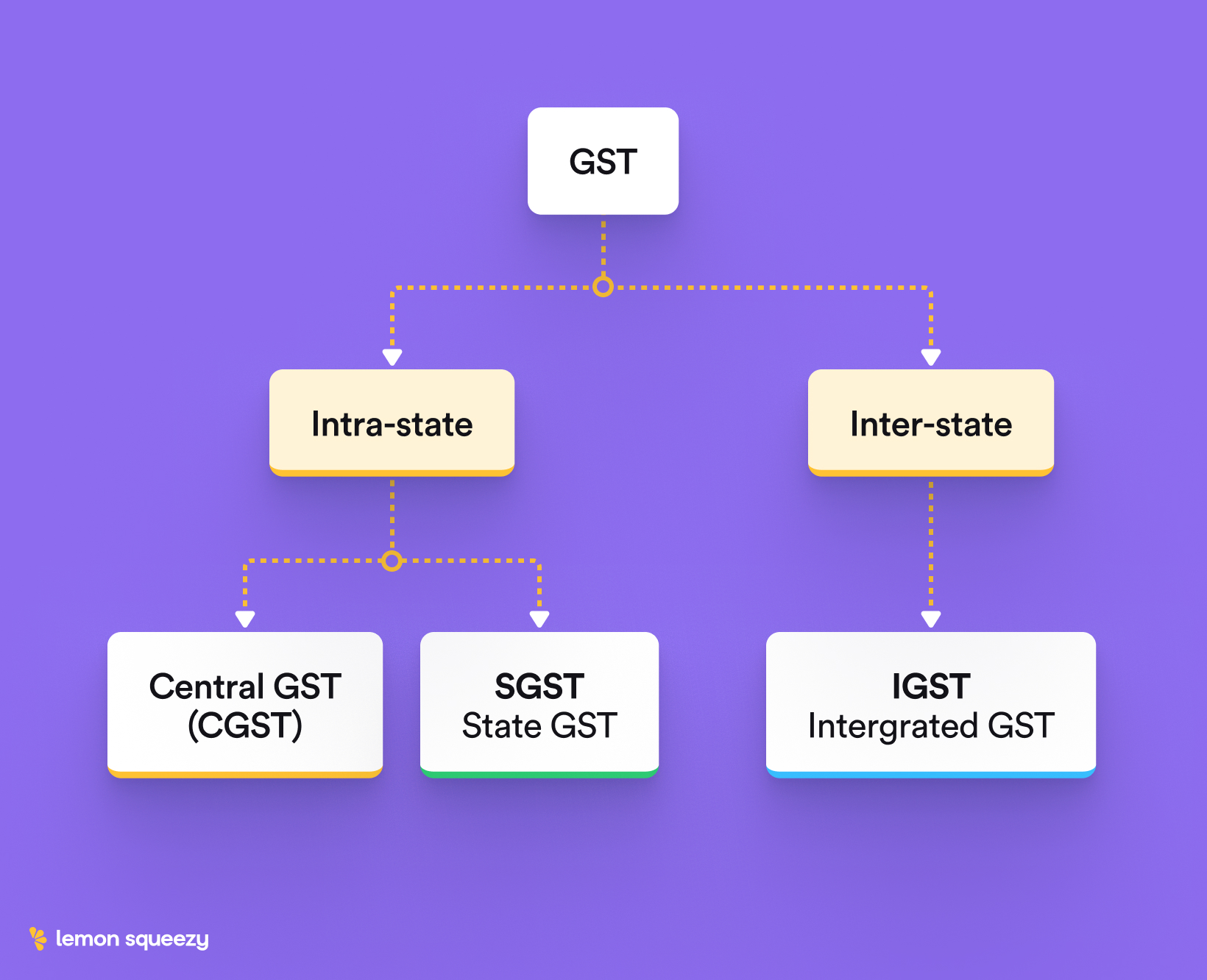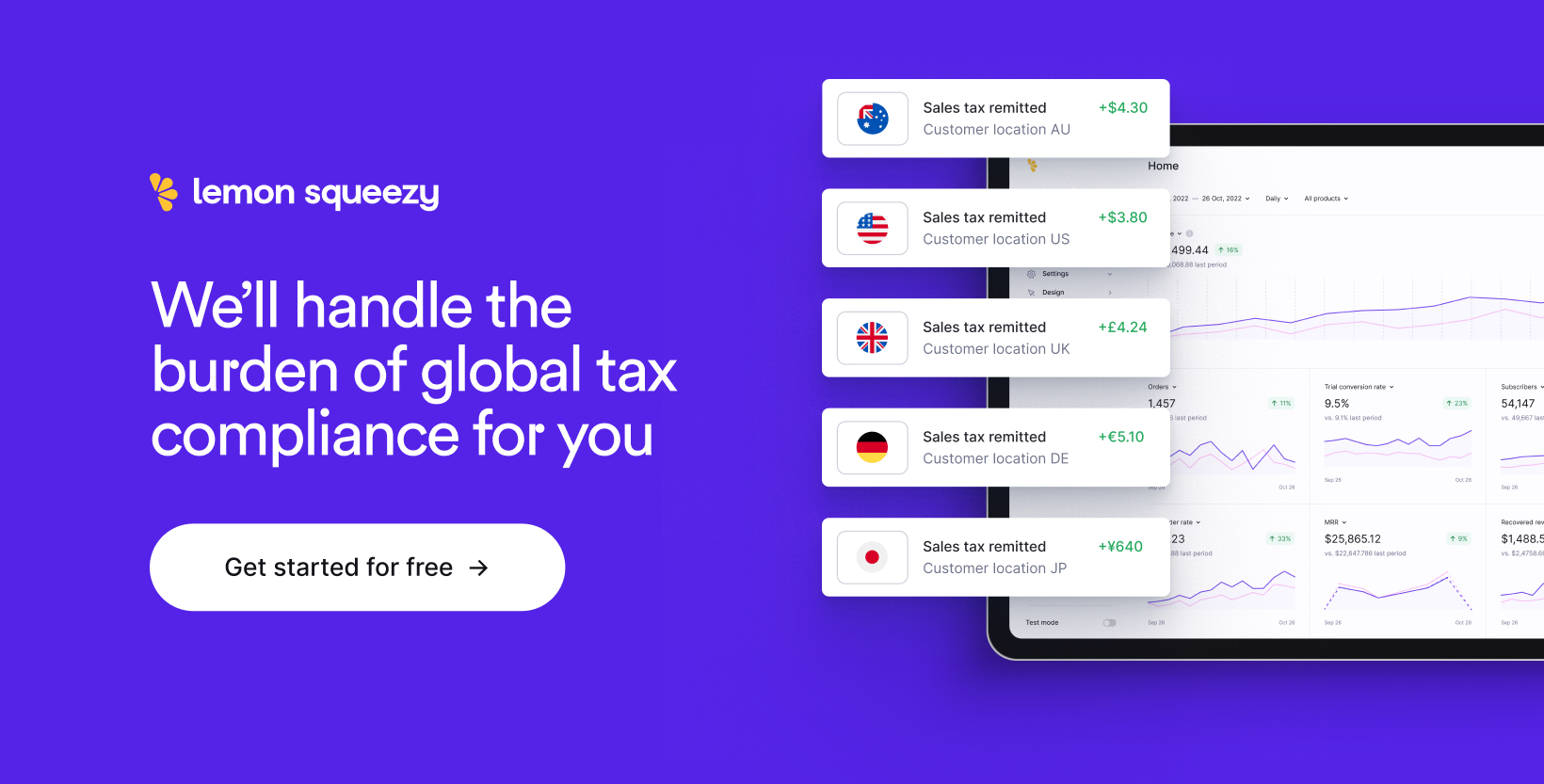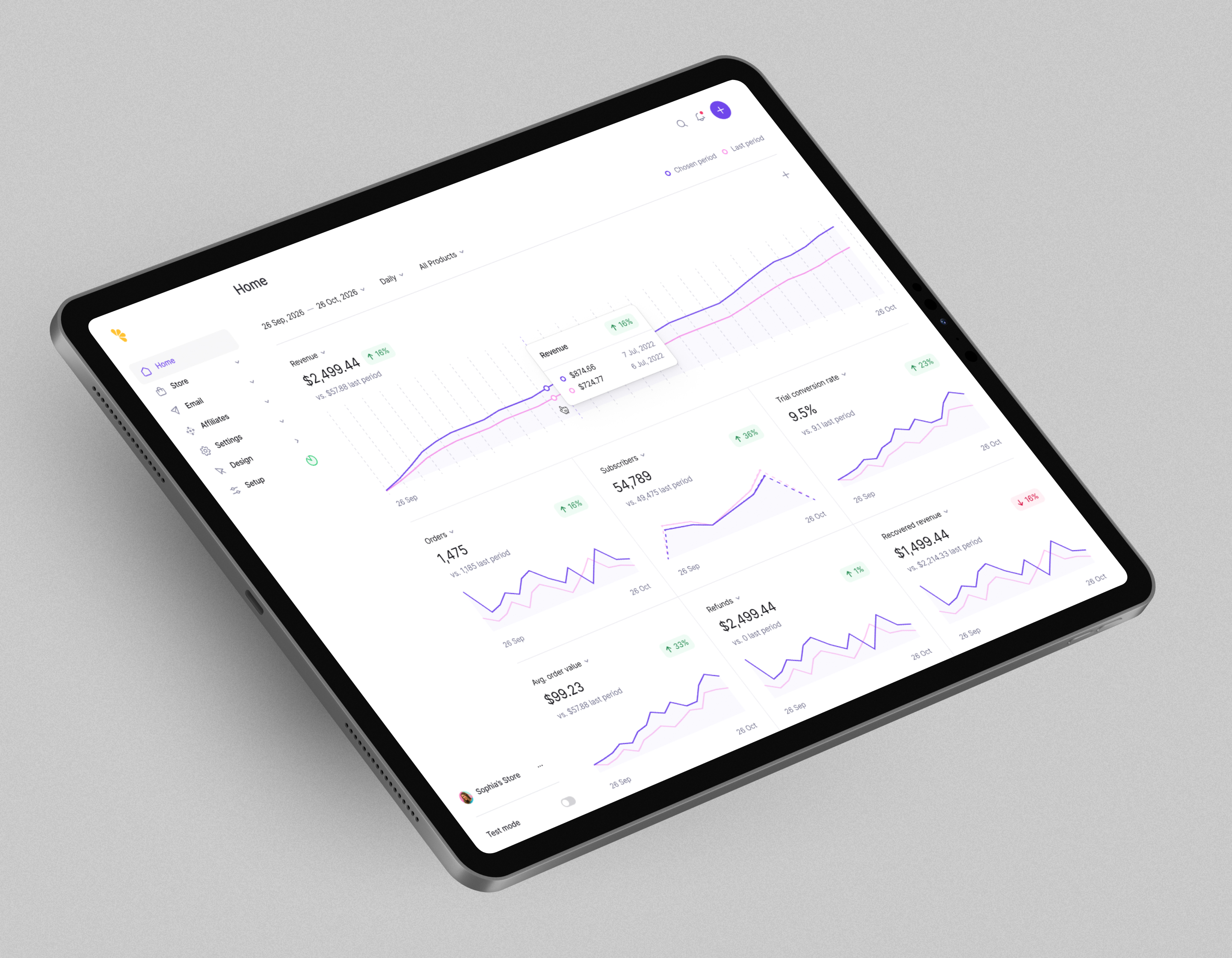
Indian Sales Tax: Navigating India's GST for your SaaS business
Author
Date
Category
India is known for its large population. Experts predict it will only start plateauing at around 1.5 billion people in 2040. It’s also predicted that the entire population will have mobile phones by then. [source]
The country has firmly established itself as a digital hub. If you sell your services to Indian customers, you can tap into a massive consumer base already familiar with online services.
However, this also means you have to consider Indian tax laws. This article will help you understand how your SaaS business will be taxed in India, and it provides a straightforward, five-step process to calculate your sales tax.
How India sales tax works
If you sell goods or services in India, you need to pay sales tax. However, there, it is referred to as a goods and services tax, or GST.
This is a human consumption tax collected indirectly from anyone who engages in a commercial transaction with Indian customers.
In the past, India’s commercial tax system required companies to track a complicated list of taxes, such as central excise, service tax, and value-added tax.
In 2017, this system was replaced by GST, which simplified their tax regime. This combined all the previous taxes into one, making the process more efficient.
India has 28 states, as well as eight union territories governed by their central government.
In India, companies can expect to pay GST to both the state authorities and the central government. This will depend on where the transaction takes place:
- Inside the state (intra-state): If a transaction is made in the same state, then Central Goods and Services Tax (CGST) and State Goods and Services Tax (SGST) apply.
- Outside the state (inter-state): If a transaction is made across state lines, then only the Integrated Goods and Services Tax (IGST) will apply.
For example, if your business in Mumbai, Maharashtra, sells products to a customer in Pune, Maharashtra, this would count as an intra-state transaction.
Therefore, both central GST and state GST will apply.
Alternatively, if you sell goods to a customer in Bengaluru, Karnataka, this would be considered an inter-state transaction and only IGST will apply. Have a look at the below table to get a better idea of which GST applies when:

GST rates categorized by codes
The Indian government applies four primary tax rates: 5%, 12%, 18%, and 28%, as well as a tax exemption (0%). The GST Council selects the applicable rate on a case-by-case basis. In India, all taxable items have a special classification code, which is connected to their respective tax rate.
They use two code systems:
- Harmonized System of Nomenclature (HSN): This is a globally recognized classification system for goods, which India has used to identify tax rates for goods. For example, HSN Code 8517 is for mobile phones and has an 18% rate.
- Service Accounting Code (SAC): Similar to HSN for goods, SAC codes classify services. For instance, postal services have a SAC Code of 998931, which is zero-rated.
Certain goods and services, such as an alcohol license and aviation turbine fuel, are not subject to taxes at all. You can look up different HSN and SAC codes here.
Useful tip
- HSN codes are generally six digits long. However, depending on the nature of the product, an additional two digits or more may be added.
- On the other hand, SAC codes are typically eight digits long. The first five digits represent the main service category, and the last three digits provide further specificity.
When does Goods and Services Tax apply to SaaS?
All software-as-a-service (SaaS) companies that sell to Indian customers are liable for Indian GST. However, the amount you’re taxed depends on where your company is based:
1. Indian SaaS companies
Indian companies providing SaaS software can fall under goods or services.
They are required to charge GST on this, and the specific rate depends on the SAC or HSN code under which it’s classified.
For example, if you have a SaaS business that offers computer software, this might have a SAC code of 998434 for “software downloads,” which has a GST rate of 18%.
Let’s say you charge ₹50 ($0.60) for a monthly subscription and you have 100 customers in India.
At the end of each month, you would collect a total of ₹5,900 ($70.98) from your Indian customers, which includes your subscription fee of ₹5,000 ($60.13) and the applicable GST of ₹900 ($10.82).
However, if your SaaS product includes predeveloped software that’s given to customers on a tangible medium, such as a hard drive or CD, it may be classified under HSN.
For example, if design software was sold on a hard drive, it might have an HSN code of 49119910 for a “hard copy of computer software.”
Keep in mind that certain SaaS products receive an exemption from GST. This is often the case with government-related SaaS products, such as applications utilized for public services and administrative functions.
When to register?
- Once Indian SaaS companies have reached a certain annual turnover, they need to register for GST.
- Right now, this threshold is ₹40 lakhs or ₹4,000,000 ($48,107.12), with a reduced rate of ₹20 lakhs or ₹2,000,000 ($24,053.56) for special category businesses and states.
- If their turnover exceeds this threshold, Indian SaaS companies must register and complete the application form on the GST portal.
2. Non-Indian SaaS companies
In 2017, when India revamped its tax regulations, the rules for Online Information Database Access and Retrieval (OIDAR) services were introduced.
Its goal was to modernize the Indian tax system so that it could accommodate digital services from other countries.
Under OIDAR, a digital good is any product or service that operates through the Internet, is primarily automated, and requires minimal human intervention.
Therefore, if you have a non-Indian SaaS company that has Indian customers, you are liable for a flat GST of 18% under OIDAR.
Let’s say you have an American company that offers project management software to Indian customers for a monthly rate of $5 (₹415.62).
Under OIDAR, you will have to pay 18% GST, which amounts to an additional $0.90 (₹74.61) for each subscription.
This means you would have to charge $5.90 (₹490.23) to your Indian customers to account for GST, which you have to collect and remit to the Indian tax authorities.
Three key amendments were made to the OIDAR rules in 2023:
- They broadened the scope of digital goods by removing the requirement for "minimal human intervention".
- They revised the definition of "non-taxable online recipient" to include unregistered users, making them subject to GST.
- The amendments eliminated the exemption for OIDAR services provided to government entities and individuals for non-business purposes.
This meant that some foreign SaaS companies that weren’t liable before had to start paying GST. Unlike Indian SaaS companies, foreign companies have to register for GST with the local tax authorities as soon as they have their first Indian customer.
The threshold limit that applies to other services does not apply to OIDAR services.
How to calculate GST for your SaaS business
Now that you have a basic understanding of how the GST regime works in India, you can apply this to your company.
Let’s follow two SaaS businesses as they become GST-compliant.
One is an American company, called AmericanSoftware, and the other is an Indian company, called IndianSoftware.
Both of these businesses have monthly subscription models where they offer accounting services to Indian customers.
There are five steps they need to take to become GST-compliant:
1. Register the SaaS business
As a non-Indian company, AmericanSoftware must immediately register for GST, regardless of its turnover.
They need to complete the registration process on the official GST portal in India, fill in the application form, and provide the necessary documents, such as:
- Proof of their company’s registration
- Address proof of the authorized signatory
- Authorization letter
- Digital signature certificate
IndianSoftware, on the other hand, needs to assess its turnover to find out whether mandatory GST registration is required.
Let’s say their turnover is only ₹30 lakhs or ₹3,000,000 ($36,080.34) right now. Since this is below the mandatory threshold of ₹40 lakhs or ₹4,000,000($48,107.12), they don’t have to register yet.
Note that they can start paying these taxes voluntarily before reaching this threshold. Some businesses choose to do this because it allows them to claim input tax credits (ITC).
Example of Input Tax Credit
- Let’s say IndianSoftware collected ₹5,000 ($60.13) in GST during January 2022.
- During the same period, they paid a software company to help update their accounting software, which cost them ₹1,000 ($12.03), of which ₹500 ($6.01) was GST.
- They can then claim ITC of ₹500 ($6.01) from their ₹5,000 ($60,13) liability, reducing their GST to ₹4,500 ($54.12).
2. Determine the customers’ location
According to OIDAR, the place where the person who receives the service is located is where the GST should apply.
Therefore, you need to collect evidence that confirms the location of your customers. This can include several items, such as:
- Residential or workplace addresses
- Details of credit card, debit card, or any other payment card issued in India
- Customer's billing address
- The IP address of the device used for accessing services
- The bank address associated with the payment for the service
- Country code of the customer's mobile phone SIM card
- Country code of the customer's landline phone
Therefore, AmericanSoftware has to collect at least two items from the above list from each of its customers to prove that they are based in India.
According to regulatory requirements, businesses should store this data for at least six years, including invoices, returns, and customer data.
On the other hand, Indian SaaS companies need to consider whether their customers are based inter-state or intra-state.
Let’s say after they’ve collected a similar list of proof, IndianSoftware realizes that all their customers are based in Karnataka, while they’re based in Andhra Pradesh.
Therefore, IGST is applicable, which amounts to the sum of the CGST and SGST rates. For example, if the CGST rate is 9% and the SGST rate is 9%, the IGST rate would be 18%.
3. Handle B2B transactions correctly
In India’s GST regime, the reverse charge mechanism (RCM) is when the responsibility for the tax payment shifts from the service provider to the recipient.
This mostly applies to business-to-business (B2B) transactions rather than business-to-consumer (B2C) transactions.
For AmericanSoftware, the reverse charge mechanism comes into play if they find that their customers in India are primarily businesses rather than end-user customers.
Here, Indian businesses paying for subscriptions are obligated to pay the applicable tax to the Indian government instead of AmericanSoftware.
However, it’s still their responsibility to communicate this to their customers so they are aware of their tax obligations.
IndianSoftware may also be subject to the reverse charge mechanism — but from the opposite side.
For example, if they receive services from nonresident providers, such as software services from the United Kingdom, they must account for the GST and pay this to the government.
4. Send a GST invoice
When IndianSoftware invoices its customers, it needs to include the appropriate SAC code and mention the GST amount charged.
It should clearly state the following:
- Input tax: This is the GST paid by a company on its expenses. For example, if IndianSoftware paid ₹500 ($6.01) in taxes on a software update for their product, it becomes part of their input tax.
- Output tax: This is the GST that’s collected from customers on sales. For IndianSoftware, this is the tax they charge their customers on monthly subscriptions. For example, if they charge ₹5,000 ($60.13) for a subscription and include ₹900 ($10.82) as GST (considering an 18% tax rate), then the latter amount becomes part of their output tax.
IndianSoftware can claim ITC on the GST they paid for the software update service (₹500/$6.01 in the example). This helps offset their total GST liability.
The net GST liability for IndianSoftware is the difference between the output tax (GST collected from customers) and the input tax (GST paid on expenses).
When it comes to AmericanSoftware, they need to follow a similar process.
However, if the RCM is applicable, they should mention the GST amount payable by the Indian company in their invoices, shifting the tax responsibility to them.
As an OIDAR service, AmericanSoftware doesn’t have to supply any SAC codes in their invoices and they can’t claim ITC, so no reference to either of these needs to be made.
5. Send a GST invoice
Finally, once GST has been collected, it needs to be sent to the Indian government.
Both AmericanSoftware and IndianSoftware must file their returns each month. If they fail to do so, they may face several consequences, such as:
- Penalties and late fees: The Indian government will fine your business if it doesn’t abide by the tax laws for SaaS businesses.
- Interest charges: The longer you avoid payment, the more interest you will have to pay on your outstanding tax.
- Blacklisting: If your business has a history of being noncompliant, it will be flagged as unreliable, ruining its reputation in India.
Note that smaller businesses are allowed to submit these taxes on a quarterly basis.

Why you need a Merchant of Record
If you have customers based in India, you have to take into account a lot of regulations. Misunderstanding any of these can result in steep fines and loss of your hard-earned profits.
At Lemon Squeezy, we can make sure you remain compliant — not just in India, but anywhere in the world.
As a merchant of record, we help you with:
- Global payments: We help you accept payments worldwide by handling different currencies and global payment rules.
- Legal support: We make sure transactions follow GST law, avoiding legal troubles and protecting your business’s reputation.
- Tax compliance: We simplify complex tasks such as international payments and calculating, collecting, and remitting taxes, freeing up time so that you can get more work done.
If you’d like to expand your SaaS business across the globe, get started for free by registering an account, or get in touch with us to find out how we can simplify your tax compliance.
Whatever stage of your journey, we’re here to help
No matter the stage of your company, we stand behind our promise to provide exceptional customer support, from initial setups to massive migrations and everything in between.
Invest in your business with peace of mind that we're here for you whether you need technical help or business advice.

Creator Guide
Looking for some advice on how to sell and market your digital products? Download the creator’s guide to dive deep into getting your idea off the ground.

Merchant of Record Guide
Free guide for all entrepreneurs and organizations explaining why partnering with a Merchant of Record is more important than you might realize.

Want merch?
Want some fresh Lemon Squeezy swag with all the lemon puns you could ever imagine? The wait is almost over as we’re gearing up for a limited-time merch drop.

Book a demo today and get your own personal guided tour of Lemon Squeezy
Still have questions about Lemon Squeezy? Book a call with our sales team today and we’ll show exactly how we can revolutionize the way your business handles global payments and sales tax forever.

Need help?
If you’re looking to get in touch with support, talk to the founders, or just say hello, we’re all ears.








